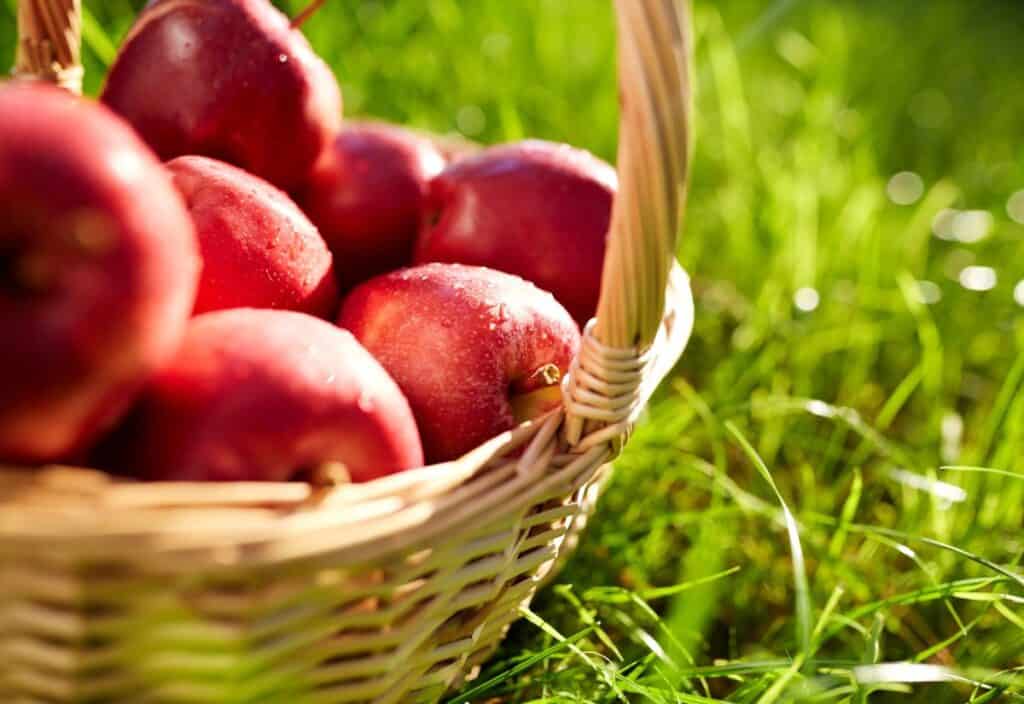Each fall, orchards across the country produce more apples than the market can handle, leaving growers with bins of unsold fruit. The oversupply drives prices down and puts farms under pressure to move their harvest fast. This abundance can quickly turn from a sign of success into a serious challenge for producers.

In response to the growing surplus, communities are finding creative ways to keep apples out of waste piles and in kitchens where people can use them. Food bank donations, cider events and preservation drives are helping turn a potential problem into something enjoyable.
Apple market faces tough year
The 2025-2026 fresh apple season in the United States is seeing a record harvest, the third straight year of big crops. The large supply is driving prices down and making it harder for farms to stay profitable.
The jump in volume comes from favorable weather and high-density orchards that are now fully productive. These modern plantings use advanced systems that grow more fruit on less land, pushing yields higher each year. The challenge for growers is that Americans have been eating fewer apples for years, while other fruits continue to compete for space in the produce aisle. The result is an ongoing imbalance between supply and demand that is likely to pressure prices once the harvest reaches the market.
Impact of a bumper harvest
A bumper crop sends ripples through the apple industry. Oversupply drives prices lower, cutting into grower profits and putting smaller farms under financial strain. When demand fails to keep up, uneaten fruit can pile up, increasing food waste and storage costs.
The surplus affects communities, too. Festivals and seasonal events often celebrate the abundance, but the sight of wasted crops can stir frustration and calls for action. For shoppers, the drop in prices can feel like a win, but for growers, it can turn a successful harvest into a stressful season.
Local efforts to use excess apples
Communities are stepping in to keep surplus apples from going to waste. Volunteer gleaning programs send teams into orchards to pick leftover fruit and deliver it to food banks, putting fresh produce on the tables of families who need it most. Some growers go further by partnering with schools, food pantries and shelters for large-scale apple giveaways, while local stores run buy-one, give-one promotions that let shoppers take part in donation efforts.
Cider pressing events have also become a way to use extra fruit. Residents bring apples to be turned into juice or cider, with proceeds often funding community projects. Local groups and extension offices host preservation workshops that teach canning, drying and freezing so households can store apples safely through winter.
Farms sometimes hold end-of-season U-pick days where visitors can clear the trees at low or no cost, helping prepare orchards for winter. To recover some revenue, some growers turn the last of their crop into low-cost produce boxes that help offset end-of-year expenses.
Make surplus apples last longer
Turning extra apples into shelf-stable products helps reduce waste and keeps fruit available year-round. Some make apple puree for breakfast spreads or smoothies, fruit leather for kids’ snacks and kombucha for everyday drinks.
Drying slices into chips or rings also creates a portable snack with a long shelf life. Freezing or canning diced apples gives bakeries and home cooks a ready supply for pastries and other recipes well past harvest season. These methods keep more of the crop in circulation and add value to what might otherwise go unsold.
Creative ways to use surplus
Home kitchens turn bumper crops into meals that go beyond dessert. Pies, crisps and tarts remain favorites through fall and into the holiday season, with countless recipes available to highlight fresh apples.
Many cooks use them in savory dishes, pairing slices with pork or tossing them into salads for a bit of crunch. Apples also show up in sauces, chutneys and relishes, while apple butter on toast or biscuits makes a simple way to enjoy the season’s bounty.
Fresh uses outside the kitchen
When harvests bring more fruit than households can eat, some turn to creative projects. Leftover apples become centerpieces, wreaths or even homemade candles that bring a seasonal look to tables and doorways.
Apple scraps also find new life in natural cleaners when combined with vinegar, giving homes a low-cost option for everyday use. Orchard-themed decor has grown popular in farm stands and markets, letting people celebrate the season long after the fruit is gone.
Finding purpose for extra apples
The challenge of too many apples is forcing growers, communities and consumers to rethink how they handle a bumper crop. Higher yields and flat demand are pushing prices down and putting farms under pressure. At the same time, food banks, towns and home cooks are turning surplus fruit into donations, cider events and preserved goods that last well beyond the season. These efforts show that even in a year of excess, apples can be put to good use instead of going to waste.
Zuzana Paar is the visionary behind five inspiring websites: Amazing Travel Life, Low Carb No Carb, Best Clean Eating, Tiny Batch Cooking and Sustainable Life Ideas. As a content creator, recipe developer, blogger and photographer, Zuzana shares her diverse skills through breathtaking travel adventures, healthy recipes and eco-friendly living tips. Her work inspires readers to live their best, healthiest and most sustainable lives.
The post What to do when orchards overflow? A growing challenge of too many apples appeared first on Food Drink Life.













(0) comments
Welcome to the discussion.
Log In
Keep it Clean. Please avoid obscene, vulgar, lewd, racist or sexually-oriented language.
PLEASE TURN OFF YOUR CAPS LOCK.
Don't Threaten. Threats of harming another person will not be tolerated.
Be Truthful. Don't knowingly lie about anyone or anything.
Be Nice. No racism, sexism or any sort of -ism that is degrading to another person.
Be Proactive. Use the 'Report' link on each comment to let us know of abusive posts.
Share with Us. We'd love to hear eyewitness accounts, the history behind an article.